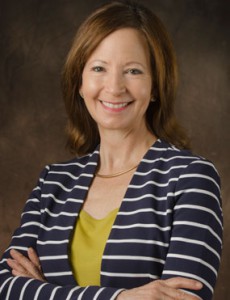 A year after transferring from her post as head of UCLA Extension to a position with the American Council of Education, Cathy Sandeen recently wrote an opinion piece outlining the major issues confronting colleges nationwide.
A year after transferring from her post as head of UCLA Extension to a position with the American Council of Education, Cathy Sandeen recently wrote an opinion piece outlining the major issues confronting colleges nationwide.
Her opinion article for the Huffington Post provides insight into what experts within the education system see as the biggest challenges for the country’s colleges and universities. Sandeen is the American Council of Education’s vice president for education attainment and innovation.
One of her first points is that colleges must “embrace the true nature of today’s college students.
“Of the roughly 20 million college students, just a quarter are traditional first-time, full-time students arriving on a residential campus fresh from high school,” wrote Sandeen, who has 22 years of experience with the University of California university system. “Our students are nontraditional with a variety of needs. “
A study by the National Center for Education Statistics reported this trend in a study earlier this decade. It found that the typical college student was not anything like the idea most people have – a person in their late teens or early 20s attending a four-year college full-time. It found that 43% of students attend two-year colleges, 37% of college students are part-time and 32% work full-time.
You can read the entire article by Sandeen here. What follows are a few of her major points.
Mobility of college credits
Sandeen said one of the biggest barriers for non-traditional students is the lack of ability to transfer credits from one institution to another. Many non-traditional students start and stop their education because of outside issues, meaning that they often have to retake classes.
“These students too often are discouraged – even defeated – by being required to repeat and pay for classes as they continue their education at new institution,” wrote Sandeen. She said an important step would be the ability to grant these students credit for classes already taken and provide them more flexibility.
University business model
Sandeen wrote that the traditional model for universities – which partly rests on high enrollment and money from lower division classes subsidizing other parts of the university – is in jeopardy. While Massive Open Online Courses (MOOCs) have not had the devastating impact on universities that many feared, Sandeen said many online learning options could potentially lower the cost of school among the lower division classes, meaning a loss of the dollars that often keep the financial boat afloat. “Disruption does not always occur predictably, “she wrote, “but there is enough evidence about what is going on in these areas to suggest that many colleges and universities should be giving more serious thought to potential business model alternatives.”
Maintaining liberal arts tradition
Sandeen also says that too many universities are focusing on simply training students for a career, rather than giving them a well-rounded education. It may also sell the student short in not preparing them for jobs beyond the narrow focus provided by the curriculum. Sandeen said there are studies being conducted on “embedding deeper learning, critical-thinking liberal arts skills and competencies” into vocational programs.
Sandeen also emphasized that diversity – the variety in the type of educational institutions across the nation – remains the real strength of the education system. No one plan, she said, will fit every school.





